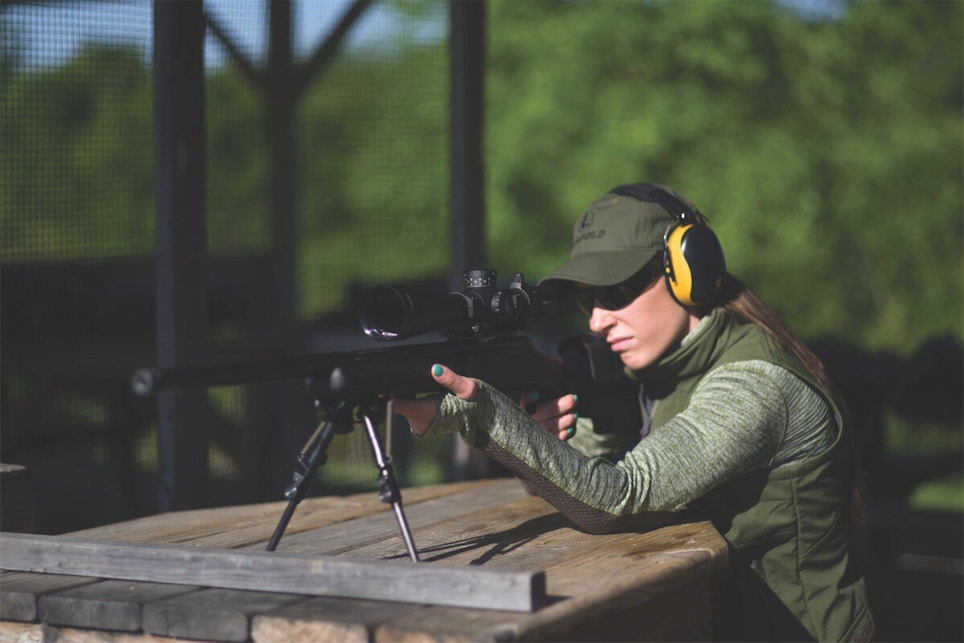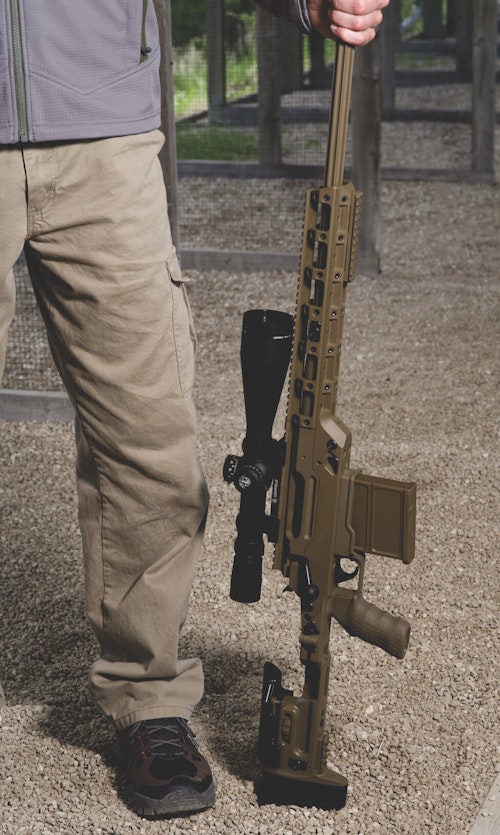Challenges are legion in the world of range and tactical apparel.
Because the range of what works and what doesn’t work varies so tremendously when it comes to apparel, depending on the kind and size of shop, clientele, and a number of other factors, the focus here is on the end uses in an effort to point out potential strategies and actions that can make the cash register ring.
The nice thing is that there is significant overlap between range apparel and tactical apparel. Virtually all tactical apparel can work at ranges, but not all range apparel can work in all tactical situations. Think head to toe, from hats and shirts through pants and all the way to socks, shoes, boots and everything in between. With apparel, fashion, or “look,” can be as important, or more important, than function. And apparel definitely needs to be viewed as functional for both range and tactical.
Like any other item in the shooting sports, it is profitable to understand the mindset of the customer when it comes to both the look and function of any equipment. When both look and function intersect, it can be magic.
Manufacturers do a great job of planting the seeds of desire among end users in the shooting sports industry regardless the category or model involved. Hence, it is smart to ride that wave rather than try to buck it or go another direction.
But it can be daunting to try to be on that kind of cutting edge, to say nothing of getting ahead of it. Beyond basic logo wear, it can be confusing, which can tempt some stores to ignore the apparel business entirely. So, what then?
There are numbers of defaults to items that are universally needed in both range and tactical settings. It can be something as simple as a belt or socks. Granted, this is pretty petty in the bigger picture, but it helps focus the bigger picture more clearly.
In the end, if something helps the customer perform better or have more fun, then it is relevant and will sell. The farther away from that basic truth something is, the riskier it becomes.
For smaller retailers, it is extremely difficult, if not impossible, to compete with apparel that is made to the lower price points. That’s where the big stores, chains and mail order come into play.
The more serious the local customer base is, the more opportunities there are to make apparel work as part of the product mix. That’s because those customers want and need products that work well now and will hold up over the long haul.
Here is where things like apparel “systems” come into play. Whether it’s a system where more layers are added as the temperatures go down or a situation where one item complements the other, the result is the sale of several items rather than just a single one. This can be as simple as matching shirt and pants. Here is where the style aspect comes into play because performance doesn’t require that everything matches. But style does.
Shoes and boots present a wide range of applications in that they not only need to be comfortable and fit right, but they also have to perform and deliver whatever level of performance is needed.
For example, low, lightweight shoes can work fine on the range but don’t make much sense in any tactical application. For situations where feet are required to engage varied surfaces, run, climb or kick, then higher, supportive and more substantial footwear is required.
Bulk and weight also are factors in footwear. The idea is to be able to offer models that deliver the highest performance in the lightest-weight package possible.
For coats, shirts, pants and gloves, it’s important both at the range and for tactical applications that the garb not only fits, but that it fits in a way that allows specific kinds of movements. The secret here is to offer clothing models that don’t inhibit the kind of movements encountered on the range and in tactical scenarios.
That may sound elemental, but frankly it isn’t so with all clothing because when it comes to apparel, sometimes what appears to be minor can actually be major in the minds of the customers. This has to do with features as basic as the type or cut of the cloth more than just size or color.
In the same vein, it can matter if areas like knees and elbows feature added protection, which often means another layer of fabric in those parts of the garment. Of concern here is both extended wear and comfort.
One area where makers seem to have figured things out is pockets. Range and tactical apparel typically has all kinds of pockets in all sizes and configurations. Heck, some models have so many pockets that it is easy to forget where a particular item was placed. But more is better when it comes to pockets on both range and tactical apparel.
How the flaps on pockets are secured can be a factor for some range and tactical apparel. Which is better: hook and loop (think Velcro), zipper or button? Maybe a combination of all three in a single garment makes sense. Other times, buttons are best, and still other times, hook and loop is handy.
The hook and loop method is slick and quick, but it’s also noisy. That doesn’t matter at the range, nor does it matter in a lot of tactical situations, but in some cases it can be a significant factor.
Although it isn’t possible to offer solutions for all challenges in the range and tactical apparel world, it is possible to outline some the things to think about.
Well considered strategies and tactics can result in sweetening the bottom line. What is best for an individual shop may not be the answer for another. One thing is certain: There is a lot of money in the apparel business. Figuring out how to harness that opportunity can pay off bigtime.







